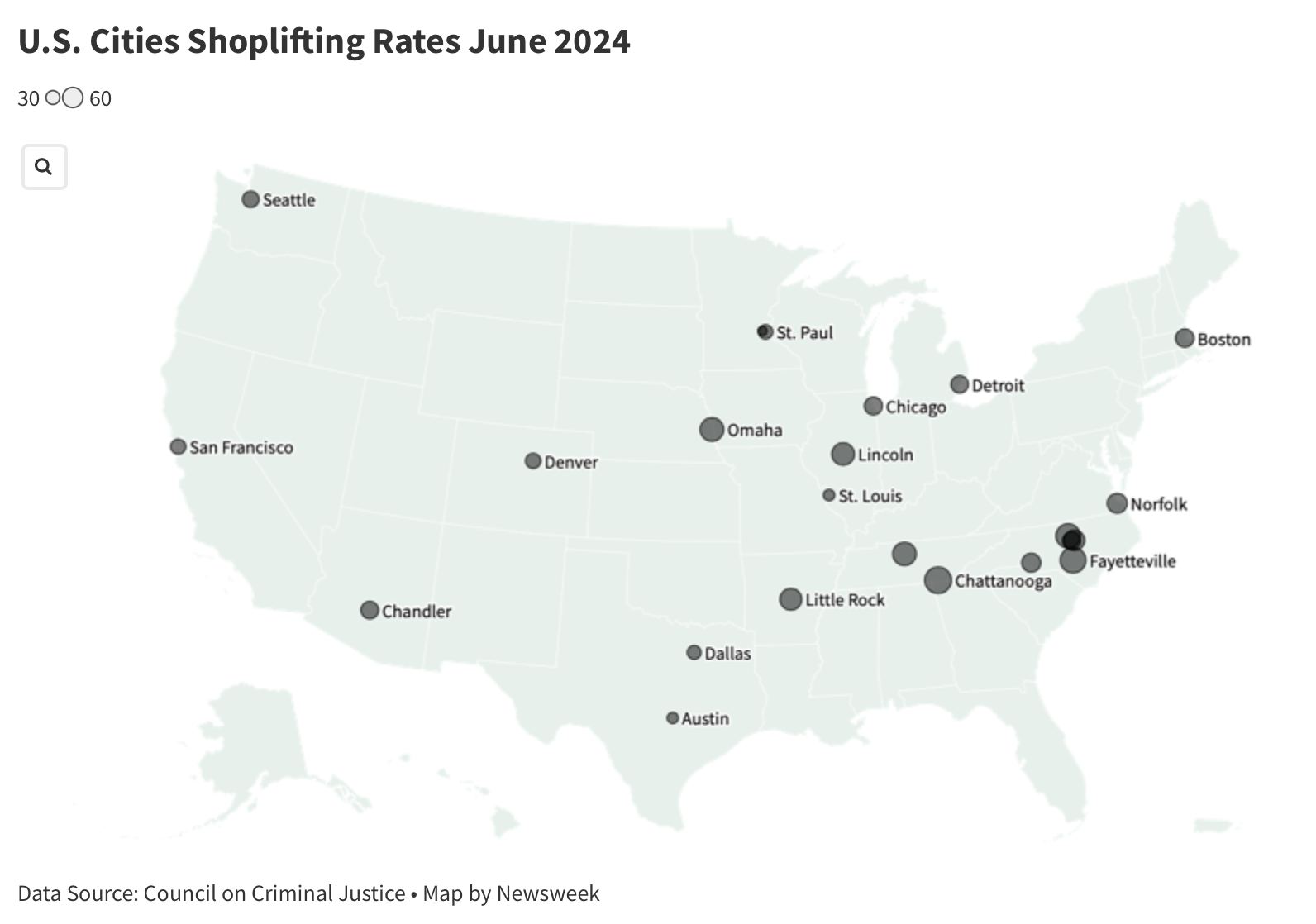Shoplifting is on the rise, with a notable 10% increase recorded from 2018 to 2024, based on a July report from the Council for Criminal Justice.
This form of theft, specifically targeting items on display for sale, was assessed across 23 cities in the U.S. between January 2018 and June 2024.
In the first half of 2024, shoplifting surged by 24% compared to the same period in 2023. Experts suggest this uptick might be partially linked to better reporting practices.
Chattanooga, Tennessee, leads the pack with a staggering rate of 89.83 incidents per 100,000 people, while Fayetteville, North Carolina, follows closely with 83.43. Minneapolis, Minnesota, however, boasts the lowest figure at just 11.06.
The cities analyzed include: Austin (TX), Boston (MA), Cary (NC), Chandler (AZ), Charlotte (NC), Chattanooga (TN), Chicago (IL), Dallas (TX), Denver (CO), Detroit (MI), Durham (NC), Fayetteville (NC), Lincoln (NE), Little Rock (AR), Minneapolis (MN), Nashville-Davidson (TN), Norfolk (VA), Omaha (NE), Raleigh (NC), San Francisco (CA), Seattle (WA), St. Louis (MO), and St. Paul (MN).
Below is a map showcasing the shoplifting rates per 100,000 residents among these cities.
The report highlights the rise of flashy thefts, like “smash-and-grab” incidents, which have changed the retail landscape and triggered extensive initiatives, some funded with millions.
However, further investigation is necessary to determine whether this trend stems from increased actual shoplifting or simply better reporting by retailers.
It’s noted that a significant percentage—nearly 75%—of property crimes go unreported, often due to factors like inadequate inventory systems or inability to identify culprits, whether they escape or are caught.
This means shoplifting rates can fluctuate yearly and between cities, with actual data reflecting only what stores choose to report.
According to Eck, pinpointing reasons behind varying crime rates across cities is challenging, yet one possibility is that cities with numerous large national chains may suffer more due to insufficient staffing or theft-prone displays.
The research indicates that many offenses in these sampled cities are returning to 2019 levels; however, homicide rates in numerous cities still surpass these pre-pandemic figures.
In total, 39 cities participated in the study, covering a vast range from Syracuse, NY (population about 142,000) to New York City (over 8.4 million). The report focused on various crimes, including homicide, assault, robbery, burglary, shoplifting, vehicle theft, and drug offenses, comparing data between 2018 and June 2024.
